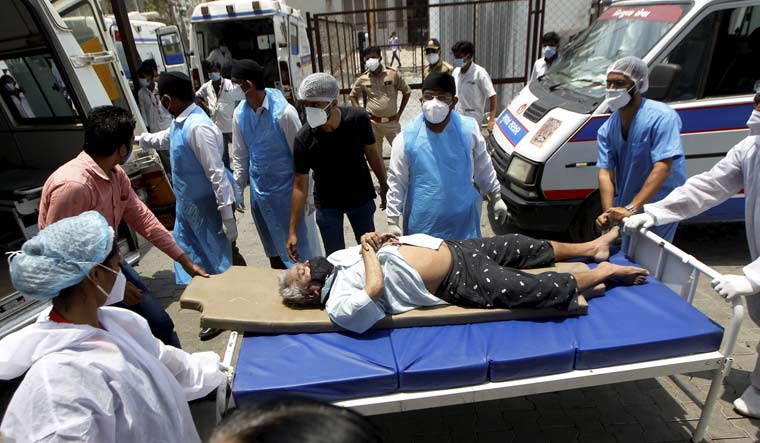The second wave of COVID-19 has hit India hard, daily new infections have hit a record, health care infrastructure is overstretched and small businesses are feeling the pinch of renewed localised lockdowns and restrictions in various states. The Reserve Bank of India stepped in and announced several measures on Wednesday to extend a helping hand to some of the sections of the economy, in particular the smaller businesses and health care-related firms.
A key measure announced is an Rs 50,000 crore on-tap term-liquidity facility for emergency health services.
“To boost provision of immediate liquidity for ramping up COVID-related health care infrastructure and services in the country, an on-tap liquidity window of Rs 50,000 crore with tenor of up to three years at the repo rate is being opened till March 31, 2022,” RBI Governor Shaktikanta Das said in an unscheduled address.
This scheme will allow banks to provide fresh support by way of loans to a wide range of entities including vaccine manufacturers, importers and suppliers of vaccines and priority medical devices, hospitals and dispensaries, pathology laboratories, manufacturers of oxygen and ventilators, importers of COVID-19-related drugs and logistics firms. This liquidity facility can also be provided to patients for treatment, Das said.
To incentivise banks to offer quick delivery of credit under this scheme, which will be available till March 31, 2022, these loans will be also classified under their priority sector lending, till their repayment or maturity, whichever is earlier.
Fresh lending by small finance banks to small micro-finance institutions (with asset size of up to Rs 500 crore) for on-lending will also be classified as priority sector lending, added Das.
Meanwhile, banks will be expected to create a COVID-19 loan book under the additional liquidity facility. As an additional incentive, lenders will be eligible to park their surplus liquidity up to the size of the COVID-19 loan book with the RBI under the reverse repo window at a rate 40 basis points higher than the current reverse repo rate.
In the last meeting in April, RBI’s monetary policy committee had left the benchmark repo rate unchanged at 4 per cent, while the reverse repo rate stands at 3.35 per cent.
The central bank has also announced measures it hopes will incentivise credit to micro, small and medium enterprises (MSMEs), which are among the hardest hit by the COVID-19 restrictions in various states.
“In February 2021, scheduled commercial banks were allowed to deduct credit disbursed to new MSME borrowers from their net time and demand liabilities for calculation of their cash reserve ratio. In order to further incentivise unbanked MSMEs into the banking system, this exemption, which is currently available for exposures of up to Rs 25 lakh and for credit disbursed up to fortnight ending October 1, 2021, is being extended till December 31, 2021,” noted Das.
The central bank also announced Resolution Framework 2.0 for COVID-19-related stressed assets of individuals and small businesses.
Borrowers (individuals, small businesses, MSMEs) having aggregate exposure of up to Rs 25 crore and who have not availed any sort of restructuring under earlier frameworks, including RBI’s resolution framework announced last year, and who were classified as standard as on March 31, 2021, will be eligible for consideration under the new resolution framework. Restructuring under the proposed framework may be invoked till September 30, 2021, and shall have to be implemented in 90 days after invocation, the governor said.
also read
- Normal monsoon predicted for 2024. Is it enough to bring down inflation?
- Climate change poses challenges for monetary policy, says RBI report
- RBI governor calls for for greater participation of banks in rupee derivatives in India, abroad
- With inflation likely to cool and growth strong, shallow rate cuts likely in the second half of FY25
For those individuals and small businesses that had availed the resolution framework announced last year, where the resolution plan permitted a moratorium of less than two years, lenders can now increase the moratorium up to two years.
Where the small businesses were restructured earlier as a one-time measure, lenders are being permitted to review the working capital sanction limits based on the reassessment of the working capital cycle as well, the RBI notified.





